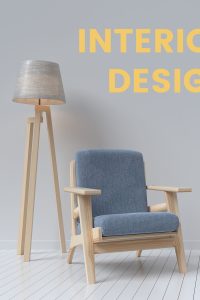So you have made the decision to buy or build your home. Exciting times!
Also, time for some major decisions.
Whether you elect to build from scratch or to buy and renovate to your liking, you will most likely need to consider whether you should use the services of an architect and interior designer.
Let’s look at the different focuses of these professions and see whether you would be well advised to spend your hard-earned money on procuring their services.
The Definitions
Table of Contents
What is an Architect?
An architect is a skilled professional who plans and designs buildings and generally plays a crucial role in their construction.
The term architect derives from the Latin architectus and means chief builder.
Architects undergo some practical training, emphasizing the safety and security of their buildings.
What is an Interior Designer?
Wikipedia provides a great definition of interior design and interior designers:
“Interior design is the art and science of enhancing the interior of a building to achieve a healthier and more aesthetically pleasing environment for the people using the space.
An interior designer is someone who plans, researches, coordinates, and manages such enhancement projects. Interior design is a multifaceted profession that includes conceptual development, space planning, site inspections, programming, research, communicating with the project’s stakeholders, construction management, and design execution.”
Different Functions – So Why Might You Need Both?
Clearly, the two jobs are entirely different.
However, they are also closely linked. For example, while the architect is involved in the design, functionality and construction of the building, the interior designer is responsible for the interior aspects of the building.
So, essentially the two professions work hand in hand to achieve the final result.
There is a clear overlap of interests for the two professions, and there is a solid argument for working closely with both the architect and the interior designer at all phases of the project.
This allows for coherent teamwork and minimizes any broken telephone syndrome. In addition, it is far easier and cheaper to address architectural issues simultaneously with interior design issues.
The firm K2 Design Group based in Massachusetts is a specialized firm that offers both services as a package.
For more information, visit their website.
Seamless design solutions and financial savings are just two of the benefits of using a combined practice.
There is an increasing demand for such a “one-stop-shop.” In addition, the convenience of only dealing with a single service provider who handles both aspects is significant.
And it is probably cheaper in the long run too.
The joint approach means that projects are considered together, resulting in a cohesive and seamless outcome.
To Sum Up Then
Suppose your project requires both an architect and an interior designer. In that case, there are benefits in using a combined practice to achieve your end goals.
The interior design aspects are considered right from the start and form part of the planning and building phases. This results in a well-rounded and complete product.

